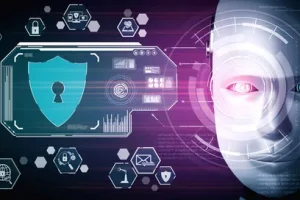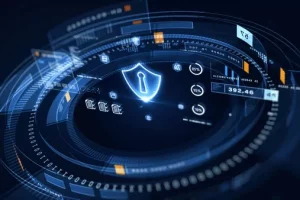What is SIEM SOC?
- Posted by 3.0 University
- Categories Cyber Security
- Date August 8, 2024
- Comments 0 comment
Need For SIEM SOC For Threat Intelligence
This is one of the primary methods that companies use today to deal with cyber threats.
Let’s delve into the Security Information and Event Management (SIEM) functions and discover how they work. Essentially, these functions are unique, and SOCs provide threat intelligence and safeguard various organizations against cyber threats.
Today, in a period in which have evolution of cyber threats is an unusual trend, the necessity for powerful security measures has gone particularly high. Security Information and Event Management (SIEM) and a Security Operations Centre (SOC) are much more than a simple, fast approach to cyberattacks; they can, in fact, be a whole and unbreakable defence against cyber onslaughts.
This detailed plan provides a walk-through of the SIEM – SOC information about threat intelligence. The text highlights the significance of SIEM – SOC across various sectors and its role in mitigating risk and ensuring compliance.
It is the most updated technology that keeps our privacy alive, gives us the time to escape danger, and makes us feel more comfortable in every situation.
What is SIEM SOC?
Security Information and Event Management (SIEM) is computerized safeguard software that enables the smooth operation of security solutions by processing and analysing security incident and threat data in real-time.
This data is collected by checking networks and hardware for vulnerabilities, misconfigurations, and other issues. The SOC functions as the core of the business and ensure its safety and security.
Many of the threats that companies face – are at the technical level. In concert, the two provide superb complements in the areas of security monitoring, incident response, and malware prevention.
The Role of SIEM in Threat Intelligence
Understanding Threat Intelligence
Threat intelligence accumulates, processes, and analyses threat data to assess enterprise risk.
A Security Event and Information Management (SIEM) system performs critical tasks, by aggregating data from various sources and identifying patterns that may indicate malicious or illegal activities.
Real-time Monitoring & Analysis
SIEM systems continuously monitor network data transfer activities and log real-time data.
It initiates early in the process of scanning the network to identify any abnormalities for correct troubleshooting.
How Does an SOC Help?
Proactive Threat Detection
A SOC team should work around the clock to detect potential threats and take the necessary actions against them before they cause significant damage.
Through the non-stop observation of network activities and logs, the team has the chance to notice and react to the incidents immediately.
Incident Response & Management
When a security incident occurs, the SOC team is responsible for managing it.
They analyse the severity of the threat, implement the required measures to contain it, and devise a strategy to reduce its effects.
Compliance and Reporting
SOC teams handle logs, configuration changes, and responses, as well as provide detailed reports used in auditing and compliance, to ensure that organizations adhere to industry standards and regulations.
Industry-Wise Analysis
Healthcare Industry
The healthcare sector carries sensitive health information, which practically makes it a useful but vulnerable point for cybercriminals to attack and steal health-related data.
The compliance regulations go the other way through SOC, allowing IT managers to monitor the data and ensure that the system is functioning properly as prescribed.
Manufacturing Industry
Neither location is nicknamed SOC!
Manufacturing firms are owners of the most valuable intellectual capital and the next cutting-edge technologies.
SOC professionals in this field use vulnerability management to gain real-time information about threats to their assets in this area.
Financial Services
These sectors are giant merchants of risk-sensitive data.
The international ISACA body, such as ISAC, establishes standards like SOC Type 1 and Type 2 audits, which the organizations, along with the SOCs, continuously monitor, respond to incidents, and adhere to.
Government Agencies
Governments are particularly vulnerable to cybercriminals’ attacks because they store personal data in their facilities.
These organizations’ security operation centre teams manage the real-time network and carry out incident analysis to protect data from theft – a practice similar to that of the nonindustrial sector.
Education Industry
Universities share data that is both private and research oriented.
Security Operation Centres are highly beneficial to these organizations because they carry out asset identification, monitor those assets, neutralize threats, and disseminate cybersecurity reports to IT (Information Technology) staff.
How SOCs Work?
The SOC serves as the brain of an organization’s security system.
As a result, it functions as the nervous system, digestive system, and endocrine system for all the data collectors in this facility.
It receives feeds from all the different organic sources, scans them for potential threats, and organizes the process of neutralizing the incidents.
Roles and Responsibilities of a SOC Team: Identify Assets
The study group on Security Operation Centres starts with initial data.
- Proactive Monitoring
A Security Operations Centre (SOC) plays a crucial role by perceiving and mitigating activities that may jeopardize network security.
The proactive reaction category includes uptime monitoring.
- Manage Logs and Configuration Changes
Encrypting logs and other data is one of the IT teams’ most crucial responsibilities in the SOC in case an unauthorized system user disregards them.
- Rank Alerts by Severity
The severity of the incident is one of the most important elements in the cybersecurity management process.
SOC personnel prioritize risks based on potential damage.
Prior situations are remedied first.
- Adjust Defences
SOC with sticking to their strategy of proactive vulnerability management and being well-educated about developing threats, SOC personnel also make adjustments to their defences to improve the system’s defensive level.
- Check Compliance
Moreover, SOC teams are accountable for ensuring that the company remains compliant with the necessary laws and regulations.
They are responsible for ensuring security and compliance.
- Notify of a Security Breach
Conversely, the organization that experienced a security breach would notify all relevant parties to reduce network downtime and maintain business continuity.
The Diversity Between SOC and CSIRT
Interestingly, the foremost thing that differentiates the SOC from the Cyber Security Incident Response Team (CSIRT) is that the former consistently engages in security event detection, while the latter is only a responding team.
They incorporate the perspective of an animal’s behaviour into their actions, developing new strategies to solve the coefficients they have used in the real-geometric model.
To put it straightforwardly, the realist removed the perspective of the scientist from the scenario.
Average cyberattacks cost about $7,00,000 to repair a database.
To keep costs in check, it is very important to have a team of skilled professionals who can help fix these kinds of issues.
The systems offer complete security:
Providing real-time, integrated security monitoring, threat detection, and/or incident response through proactive means, the SIEM SOC helps companies in various fields identify, prioritize, and respond to potential threats promptly.
Forcing the rules and watching all the time make SIEM – SOC applications a safe and confidential app used by organizations to secure their resources.
If you’re looking for an Ethical Hacking Course or a cybersecurity online certification course, register now at 3.0 University.
You may also like

When AI Hacks Back: Cybersecurity in 2025


